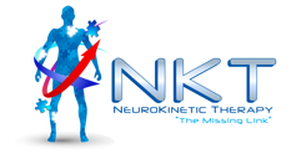NeuroKinetic Therapy™

NeuroKinetic Therapy is a sophisticated form of manual therapy that combines motor control theory and manual muscle testing. The science of motor control theory states that the motor control center in the cerebellum stores all the coordination patterns of the body. It is directed by the limbic system and the cerebral cortex to not only create movement patterns (such as when a baby learns to stand), but also to create substitute movement patterns when we are injured. An experiment was performed with an EMG that measured the ability of different muscles in the upper arm and forearm to perform supination of the forearm. As we know, the biceps is the most powerful supinator of the forearm. In this experiment, the biceps were inhibited and various muscles of the forearm were measured to see which one engaged to perform supination. In this case, the brachioradialis supinated the strongest. What does this tell us? When a muscle is inhibited for whatever reason, the motor control center will find a substitute muscle to perform the function. If this pattern is allowed to remain in the motor control center, dysfunction and pain will follow. How then can we undo this dysfunctional pattern?
We also know from motor control theory that if the body fails to perform a specific function, the motor control center is open to new learning for approximately 30 to 60 seconds. How then can we communicate with the motor control center? Manual muscle testing allows us to find muscles that are weak or dysfunctional in relationship to other muscles. Using the experiment above, a practitioner of NeuroKinetic Therapy would test the strength of the brachioradialis muscle and then test the strength of the biceps. In this case, the biceps would test weak. A release of 30 to 60 seconds would be performed on the brachioradialis and then the biceps would be retested. If the biceps test strong, the motor control center has been successfully reprogrammed. If the biceps still test weak, the brachioradialis could be re-released or another muscle in the area may need to be released. The client would be sent home with instructions on how to release the brachioradialis and then how to strengthen the biceps. This basic concept can be applied to muscles and dysfunctional patterns throughout the body.
NeuroKinetic Therapy is an excellent modality in rehabilitation and manual therapy because it not only identifies the cause of pain and dysfunction, but also corrects it very quickly and quite painlessly.
Some of the benefits of NKT™ include:
We also know from motor control theory that if the body fails to perform a specific function, the motor control center is open to new learning for approximately 30 to 60 seconds. How then can we communicate with the motor control center? Manual muscle testing allows us to find muscles that are weak or dysfunctional in relationship to other muscles. Using the experiment above, a practitioner of NeuroKinetic Therapy would test the strength of the brachioradialis muscle and then test the strength of the biceps. In this case, the biceps would test weak. A release of 30 to 60 seconds would be performed on the brachioradialis and then the biceps would be retested. If the biceps test strong, the motor control center has been successfully reprogrammed. If the biceps still test weak, the brachioradialis could be re-released or another muscle in the area may need to be released. The client would be sent home with instructions on how to release the brachioradialis and then how to strengthen the biceps. This basic concept can be applied to muscles and dysfunctional patterns throughout the body.
NeuroKinetic Therapy is an excellent modality in rehabilitation and manual therapy because it not only identifies the cause of pain and dysfunction, but also corrects it very quickly and quite painlessly.
Some of the benefits of NKT™ include:
- Uses muscle testing to locate the source of the problem
- Achieves faster, longer-lasting results than many methods
- Eliminates enduring patterns of dysfunction from old injuries
- Reduce the effects of repetitive stress injuries
- Enhances athletic performance
- Quickly improves muscle coordination
- Increases range of motion, energy, strength and stamina throughout the body
Examples of NKT™ in Action with David Weinstock |NKT™ interview with Kathy Dooley
|
|
|
|
